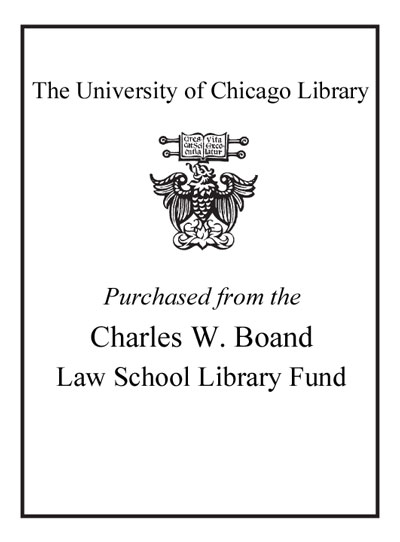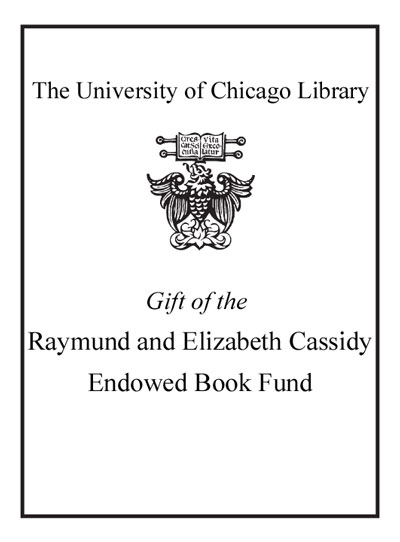The impact of minority rights mechanisms /
Saved in:
| Author / Creator: | Letschert, Rianne Monique, 1976- |
|---|---|
| Imprint: | The Hague : T.M.C. Asser, c2005. |
| Description: | xxi, 501 p. ; 25 cm. |
| Language: | English |
| Subject: | |
| Format: | Print Book |
| URL for this record: | http://pi.lib.uchicago.edu/1001/cat/bib/5997602 |
Table of Contents:
- Preface
- Acknowledgments
- Abbreviations
- Part I. Introduction
- Chapter 1. Minority Rights Mechanisms, Instruments and Beneficiaries
- 1.1. Introduction
- 1.2. Three Minority Rights Mechanisms - An Introduction to Part II
- 1.3. An Analysis of the Three Mechanisms through Case Studies - An Introduction to Part III
- 1.4. Minority Rights Instruments
- 1.4.1. A Short Historical Introduction
- 1.4.2. The Copenhagen Document
- 1.4.3. The Declaration on the Rights of Persons Belonging to National or Ethnic, Religious and Linguistic Minorities
- 1.4.4. The Framework Convention for the Protection of National Minorities
- 1.4.5. The Legal Status of the Minority Rights Instruments
- 1.5. The Beneficiaries of the Standards
- 1.6. Concluding Observations
- Part II. Analysis of Aims and Specific Working Methods
- Chapter 2. The OSCE High Commissioner on National Minorities
- 2.1. Introduction
- 2.2. The Establishment of the High Commissioner
- 2.3. The Negotiations behind the Realisation of the Mandate
- 2.4. Objectives and Institutional Setting
- 2.5. Competences and Limitations
- 2.5.1. Early Warning
- 2.5.2. Early Action
- 2.5.3. Collecting and Receiving Information
- 2.5.4. Country Visits
- 2.5.5. Limitations
- 2.6. Key Characteristics
- 2.6.1. Independence and Impartiality
- 2.6.2. Confidentiality
- 2.6.3. Cooperative Attitude
- 2.7. Development of the Mandate and Working Methods
- 2.7.1. Assessment and Intensity of Involvement
- 2.7.2. Facilitating and Maintaining Dialogue
- 2.7.3. Country Recommendations
- 2.7.4. Country versus Thematic Approach
- 2.7.5. Political versus Legal Approach
- 2.7.6. Project Work
- 2.8. Deficiencies in the Mandate and Working Methods
- 2.8.1. Follow-Up
- 2.8.2. Participation of Minority Groups and NGOs in the Work of the HCNM
- 2.8.3. Individual Remedies
- 2.9. Other OSCE Activities in the Field of Minority Rights
- 2.9.1. Human Dimension Mechanisms
- 2.9.2. Long-Term Missions/Ad Hoc Missions
- 2.10. Concluding Observations
- Chapter 3. The UN Working Group on Minorities
- 3.1. The Establishment of the Working Group
- 3.2. Objectives and Institutional Setting
- 3.3. Competences and Limitations
- 3.4. Development of the Mandate and Working Methods
- 3.4.1. Facilitating and Maintaining Dialogue
- 3.4.2. Collecting and Receiving Information
- 3.4.3. Thematic Approach
- 3.4.4. Working Group Recommendations and Conclusions
- 3.4.5. Country Visits
- 3.4.6. Regional Approach
- 3.5. Deficiencies in the Mandate and Working Methods
- 3.5.1. Lack of Dialogue
- 3.5.2. Thematic Focus
- 3.5.3. Follow-Up
- 3.5.4. Global Focus
- 3.5.5. Individual Remedies
- 3.6. The Future Role of the Working Group
- 3.6.1. Special Advisor on Genocide
- 3.6.2. Independent Expert on Minority Issues
- 3.7. Other UN Activities in the Field of Minority Rights
- 3.7.1. The Human Rights Committee
- 3.7.1.1. Article 27 ICCPR
- 3.7.1.2. Cases relating to Minority Rights
- 3.7.2. Other UN Mechanisms Addressing Minority Rights
- 3.7.2.1. Treaty-Based Mechanisms
- 3.7.2.2. Charter-Based Mechanisms
- 3.8. Concluding Observations
- Chapter 4. The CoE Advisory Committee on Minorities
- 4.1. Introduction
- 4.2. The Establishment of the Advisory Committee
- 4.2.1. The Work of CAHMIN
- 4.2.2. The Work of CAHMEC
- 4.3. Objectives and Institutional Setting
- 4.4. Competences and Limitations
- 4.4.1. Composition of the AC
- 4.4.2. AC Meetings
- 4.4.3. Reporting Procedure
- 4.4.4. The Right to Obtain Information and Hold Meetings
- 4.4.5. Follow-Up Procedure
- 4.5. Development of the Mandate and Working Methods
- 4.5.1. AC and CoM Meetings
- 4.5.2. Relation AC and CoM
- 4.5.3. State Reports
- 4.5.4. Collecting and Receiving Information
- 4.5.5. Country Visits
- 4.5.6. AC Opinions
- 4.5.6.1. General Remarks
- 4.5.6.2. Personal Scope of Application
- 4.5.6.3. Substantive Analysis
- 4.5.7. Country versus Thematic Approach
- 4.5.8. Facilitating and Maintaining Dialogue
- 4.5.9. Follow-Up
- 4.5.10. Participation of Minority Representatives and NGOs
- 4.5.11. Coordination and Cooperation
- 4.6. Deficiencies in the Mandate and Working Methods
- 4.6.1. Drawbacks of the Reporting System
- 4.6.2. Lack of Dialogue and Transparency
- 4.6.3. Too Broad an Approach?
- 4.6.4. Individual Remedies
- 4.7. Other CoE Activities in the Field of Minority Protection
- 4.7.1. Parliamentary Assembly
- 4.7.1.1. General Recommendations concerning Minority Issues
- 4.7.1.2. PA Recommendations concerning the FCNM
- 4.7.2. Monitoring the Honouring of CoE Obligations
- 4.7.3. European Commission against Racism and Intolerance
- 4.7.4. Venice Commission
- 4.7.5. Article 14 and the European Court of Human Rights
- 4.7.5.1. Article 14 ECHR
- 4.7.5.2. Other Cases relating to Minority Rights
- 4.7.5.3. References to the FCNM in the Court's Case-Law
- 4.7.6. Protocol 12 to the ECHR
- 4.7.7. Additional Protocol on the Rights of Minorities to the ECHR
- 4.7.8. European Charter for Regional and Minority Languages
- 4.8. Concluding Observations
- Chapter 5. Evaluating Strengths, Weaknesses, and Overlap
- 5.1. Introduction
- 5.2. Comparing Aims and Mandates
- 5.3. Comparative Analysis of Approaches and Working Methods
- 5.3.1. Country versus Thematic Approach
- 5.3.2. Non-Confrontational Approach
- 5.3.3. Promotion of Dialogue
- 5.3.4. Involvement of Civil Society
- 5.4. Increasing Correspondences and Existing Differences
- 5.5. Deficiencies in the Exercise of the Mandates
- 5.5.1. Dependence
- 5.5.2. Sufficient Follow-Up and Enforcement Measures
- 5.5.3. Lack of Individual Remedies
- 5.6. Conditions Affecting the Mechanisms' Ability to Influence Implementation
- 5.7. Concluding Observations
- Part III. An Analysis of the Three Mechanisms through Case Studies
- Introduction to Part III: Case Studies on Macedonia and Croatia
- Chapter 6. The Involvement of the Three Mechanisms in Macedonia
- 6.1. Historical Overview
- 6.1.1. 1991-2001
- 6.1.2. Violent Conflict in 2001
- 6.1.3. The Ohrid Framework Agreement
- 6.2. The High Commissioner on National Minorities
- 6.2.1. Reasons for Involvement
- 6.2.2. The OSCE Mission and its Relation to the HCNM
- 6.3. The High Commissioner's Recommendations in 1993-2005
- 6.3.1. Education
- 6.3.2. Participation in Public Affairs
- 6.3.2.1. Local Self-Government
- 6.3.2.2. Employment in Public Services
- 6.3.2.3. Electoral Reforms
- 6.3.3. National Census of the Population
- 6.3.4. Strengthening Inter-Ethnic Dialogue
- 6.3.5. Strengthening the Rule of Law
- 6.3.6. Citizenship
- 6.3.7. Use of National Symbols
- 6.3.8. Access to the Media
- 6.4. Concluding Observations regarding the Implementation of the HCNM's Recommendations
- 6.5. The Working Group on Minorities
- 6.6. Interventions regarding Macedonia
- 6.7. Concluding Observations regarding the Involvement of the Working Group
- 6.8. Other UN Activities
- 6.8.1. UNPREDEP
- 6.8.2. Special Rapporteur on the Former Yugoslavia of the UN Commission on Human Rights
- 6.8.3. The Human Rights Committee
- 6.9. The Advisory Committee on Minorities
- 6.10. General Remarks regarding the First Monitoring Cycle
- 6.11. Article-by-Article Analysis
- 6.11.1. Personal Scope of Application
- 6.11.2. Right to be Treated (or not) as a Minority; Article 3
- 6.11.3. Right to Equality; Article 4
- 6.11.4. Maintenance and Development of Culture and Assimilation; Article 5
- 6.11.5. Promotion of Tolerance and Dialogue; Article 6
- 6.11.6. Freedom of Association and the Right to Establish Associations; Articles 7 and 8
- 6.11.7. Freedom of Expression and Access to the Media; Article 9
- 6.11.8. Right to Use the Minority Language and Names and Signs in the Minority Language; Articles 10 and 11
- 6.11.9. Instruction in and of the Mother Tongue; Articles 12, 13 and 14
- 6.11.10. Effective Representation at Local and National Level; Article 15
- 6.11.11. Measures that Alter the Proportions of the Population; Article 16
- 6.11.12. Cross-Border Contacts and Bilateral Agreements; Articles 17 and 18
- 6.12. Concluding Observations regarding the Implementation of the AC Opinion
- 6.13. Other CoE Activities
- 6.13.1. The Parliamentary Assembly
- 6.13.2. The European Commission against Racism and Intolerance
- 6.14. The European Union
- 6.14.1. The EU and the Protection of Minorities
- 6.14.2. The EU in Macedonia
- 6.14.3. The EU Special Representative
- 6.14.4. The European Commission
- 6.15. Coordination and Cooperation between the Institutions involved in Macedonia
- 6.16. Concluding Observations regarding the Implementation of Minority Rights in Macedonia
- Chapter 7. The Involvement of the Three Mechanisms in Croatia
- 7.1. Historical Overview
- 7.2. The High Commissioner on National Minorities
- 7.2.1. Reasons for Involvement
- 7.2.2. The OSCE Mission and its Relation to the HCNM
- 7.3. The High Commissioner's Recommendations in 1995-2005
- 7.3.1. Return of Displaced Persons and Occupancy/Tenancy Rights
- 7.3.1.1. Occupancy Rights
- 7.3.1.2. Tenancy Rights
- 7.3.2. Constitutional Law on the Rights of National Minorities
- 7.3.2.1. Drafting Process
- 7.3.2.2. Substantive Provisions
- 7.3.3. Strengthening Inter-Ethnic Dialogue
- 7.4. Concluding Observations regarding the Implementation of the HCNM's Recommendations
- 7.5. The Working Group on Minorities
- 7.6. Other UN Activities
- 7.6.1. UNTAES
- 7.6.2. Special Rapporteur on the Former Yugoslavia of the UN Commission on Human Rights
- 7.6.3. The Human Rights Committee
- 7.7. The Advisory Committee on Minorities
- 7.8. General Remarks regarding the First and Second Monitoring Cycles
- 7.8.1. First Cycle
- 7.8.2. Second Cycle
- 7.9. Article-by-Article Analysis
- 7.9.1. Personal Scope of Application
- 7.9.2. Right to be Treated (or not) as a Minority; Article 3
- 7.9.3. Right to Equality; Article 4
- 7.9.4. Maintenance and Development of Culture and Assimilation; Articles
- 7.9.5. Promotion of Tolerance and Dialogue; Article 6
- 7.9.6. Freedom of Association and the Right to Establish Associations; Articles 7 and 8
- 7.9.7. Freedom of Expression and Access to the Media; Article 9
- 7.9.8. Right to Use the Minority Language and Names and Signs in the Minority Language; Articles 10 and 11
- 7.9.9. Instruction in and of the Mother Tongue; Articles 12, 13 and 14
- 7.9.10. Effective Representation at Local and National Level; Article 15
- 7.9.11. Measures that Alter the Proportions of the Population; Article 16
- 7.9.12. Cross-Border Contacts and Bilateral Agreements; Articles 17 and 18
- 7.10. Concluding Observations regarding the Implementation of the AC Opinions
- 7.11. Other CoE Activities
- 7.11.1. The Venice Commission
- 7.11.2. The Parliamentary Assembly
- 7.11.3. The European Commission against Racism and Intolerance
- 7.12. The European Union
- 7.12.1. The European Commission
- 7.12.2. The European Parliament
- 7.13. Coordination and Cooperation between the Institutions involved in Croatia
- 7.14. Concluding Observations regarding the Implementation of Minority Rights in Croatia
- Chapter 8. Conditions and Factors Influencing the Implementation of Minority Rights
- 8.1. Introduction
- 8.2. Evaluation of Conditions affecting the Mechanisms' Ability to Influence Implementation
- 8.2.1. Flexible Mandate
- 8.2.2. Independence
- 8.2.3. Possibility to Conduct Country Visits
- 8.2.4. Possibility to Continue Dialogue
- 8.2.5. Possibility to Seek Contacts with NGOs
- 8.2.6. Availability of Follow-Up Procedures
- 8.2.7. Availability of Enforcement Measures or Appropriate Incentives
- 8.2.8. Coordination and Cooperation Modalities
- 8.3. Evaluation of the Influence of Factors Specific to Minority Rights
- 8.3.1. Minority Rights Instruments
- 8.3.2. Beneficiaries of the Norms
- Part IV. Concluding Observations
- Chapter 9. The Impact of Minority Rights Mechanisms
- 9.1. Introduction
- 9.2. Justifying the Existence of Three Minority Rights Mechanisms
- 9.3. Judicial and Non-Judicial Protection of Minority Rights
- 9.4. Assessing Conditions and Factors Influencing Implementation
- 9.5. Looking Ahead
- Summary
- Samenvatting
- Bibliography
- Table of treaties, documents and cases
- Index


